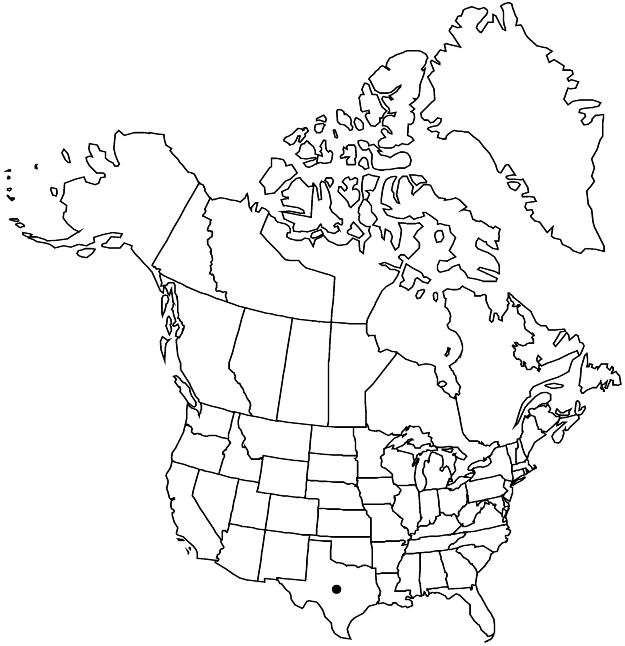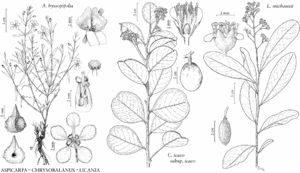Aspicarpa hyssopifolia
Boston J. Nat. Hist. 6: 167. 1850.
Plants erect or spreading-ascending, 8–30 cm. Leaves: petioles 0.5 mm; blade narrowly lanceolate, larger blades 10–25 × 2–8 mm, length (2.2–)2.7–7(–8.3) times width, base rounded, apex acute or slightly obtuse, surfaces thinly sericeous to glabrescent, hairs persisting longest on margins and abaxial midrib. Chasmogamous flowers borne singly in axils of full-sized leaves; petals lemon yellow, outermost sometimes with red blotch; staminodes shorter than fertile stamens, ± hidden by sepals. Cleistogamous flowers sessile or subsessile in axils of full-sized leaves, sometimes absent. Nutlet 2.5–3 mm diam., rugose or bearing toothlike protuberances, dorsal crest 0.5–1 mm, coarsely toothed, extended forward 1.5–2 mm. 2n = 80.
Phenology: Flowering and fruiting Apr–Nov.
Habitat: Brushy, dry, calcareous slopes.
Elevation: 50–900 m.
Distribution

Tex., Mexico (Coahuila, Nuevo León, Tamaulipas).
Discussion
In the flora area, Aspicarpa hyssopifolia is found only in southern and western Texas.
Selected References
None.
